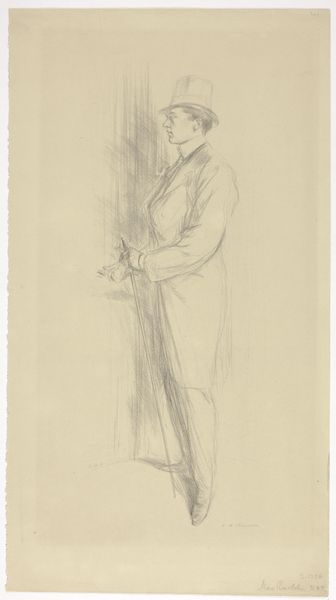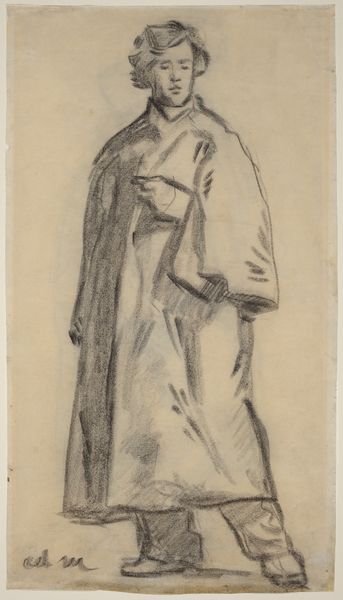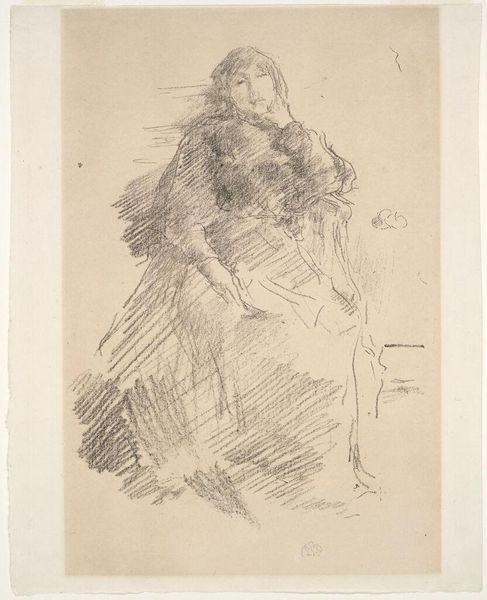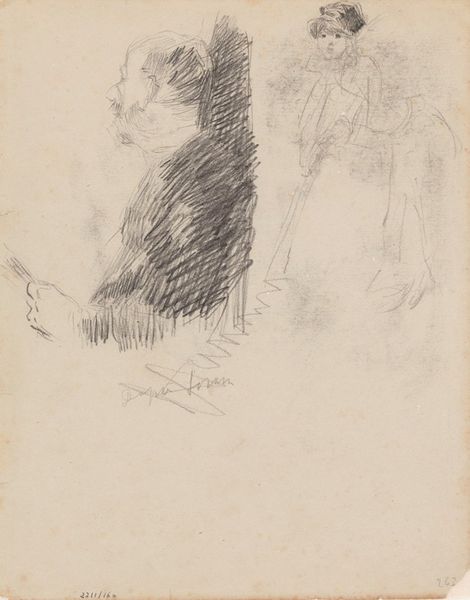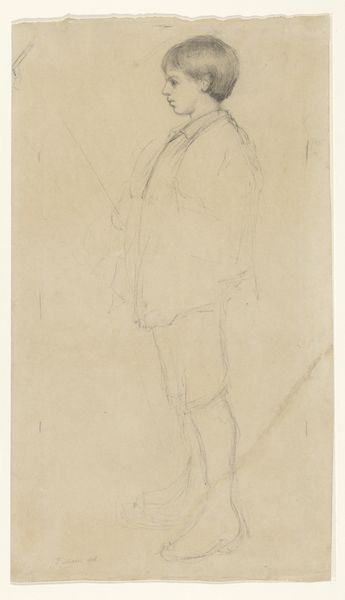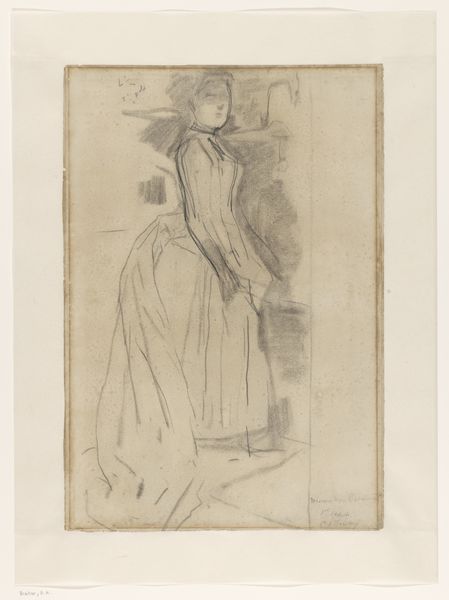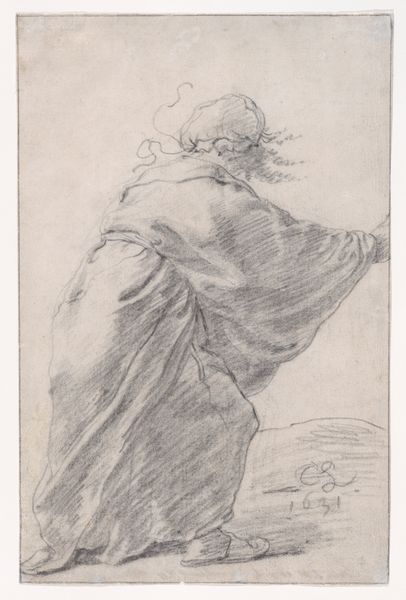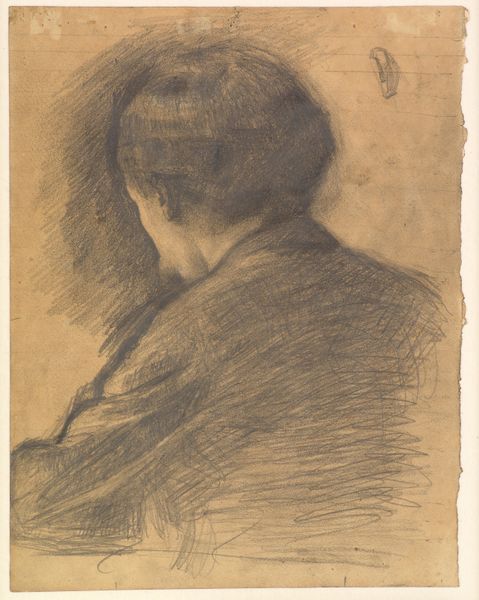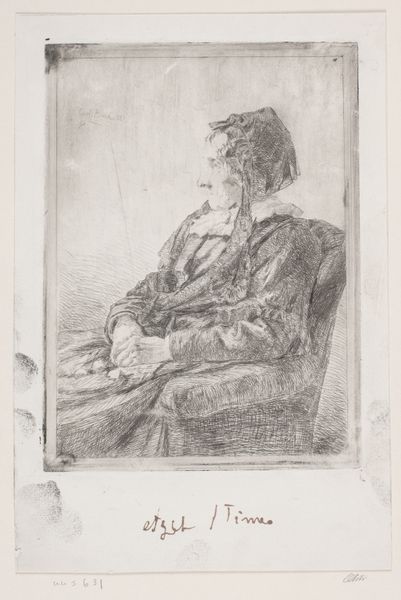
Dimensions: height 456 mm, width 258 mm
Copyright: Rijks Museum: Open Domain
Editor: So, here we have George Hendrik Breitner’s "Studies van een lopende vrouw," dating from around 1867 to 1923. It's a pencil drawing, and the lines feel so immediate and fleeting, like catching a glimpse of someone on a busy street. There's a real sense of movement. What do you see in this piece, beyond the surface? Curator: Ah, yes! It’s as though Breitner captured a whisper of a moment, hasn’t he? I see a reflection of Amsterdam's bustling energy at the turn of the century. For me, it's about how he’s almost challenging the academic art of the time by choosing everyday subjects, particularly working-class women, as his focus. Can you sense that subtle shift in perspective? Editor: Absolutely! The sketchiness gives it a modern feel, almost like a photograph snapping a candid moment. Did he often focus on women in motion like this? Curator: He did indeed. He was captivated by the rhythm of urban life and these quick sketches were, I think, his way of understanding and capturing it. They're intimate and personal, like stolen glances from a personal sketchbook. But it’s more than just documentation; he seems to imbue these women with a certain…dignity, wouldn't you agree? Even in their hurried state. Editor: Yes, definitely dignity, and perhaps also a touch of mystery. I love how unfinished it feels; it makes you wonder about the stories of these women. Curator: Precisely! That incompleteness invites us to participate, to imagine their lives, their destinations, their inner thoughts. And that, my friend, is the beauty of a truly evocative sketch. Editor: I'll never look at a quick sketch the same way again! It's so much more than just a preliminary study. Curator: Isn't it wonderful? These glimpses into the artist's process, and the lives of those fleeting figures, can sometimes tell us more than any grand, finished masterpiece.
Comments
No comments
Be the first to comment and join the conversation on the ultimate creative platform.

